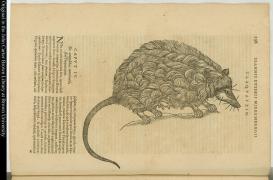Epistemological change in early modern Europe has long been told as an internalist story. Even with the Iberian and global “turns” in the history of science, the emphasis has been on the agency of creoles (imperial and settler-colonial actors). This project begins with indigenous epistemologies and explores how scholars and artists in the early modern period “entangled” European and Indigenous epistemologies in a set of zoological projects. The central focus is four sets of sources. The first are the so-called “Borgia group” of codices produced by indigenous people in central Mexico. Often referred to as “divinatory almanacs,” when read alongside colonial-era documents they also reveal much about ecological concepts and epistemology in late post-classic Native Mesoamerica. The second set of sources is the texts and images produced by Nahua scholars and artists between 1565 and 1577 that culminated in Book 11 (Things of the Earth) of the Florentine Codex. The third is the texts and images of animals of the “Historiae animalium” of New Spain (1576), a project directed by the Spanish Crown-appointee Francisco Hernández but heavily reliant on the labor and expertise of Nahua scholars and artists. The fourth is the zoological works of London Royal Society members John Ray and Francis Willughby, above all their Ornithology (1678).

An engraving based on the painting of a possum made by an Indigenous artist in New Spain in the 1570s.
Source: Juan Eusebio Nieremberg’s Historia naturae, maxime peregrinae (Antwerp, 1635).
Project
(2021)
Animals and Entangled Epistemologies in the Early Modern Atlantic World
- Marcia (Marcy) Norton
